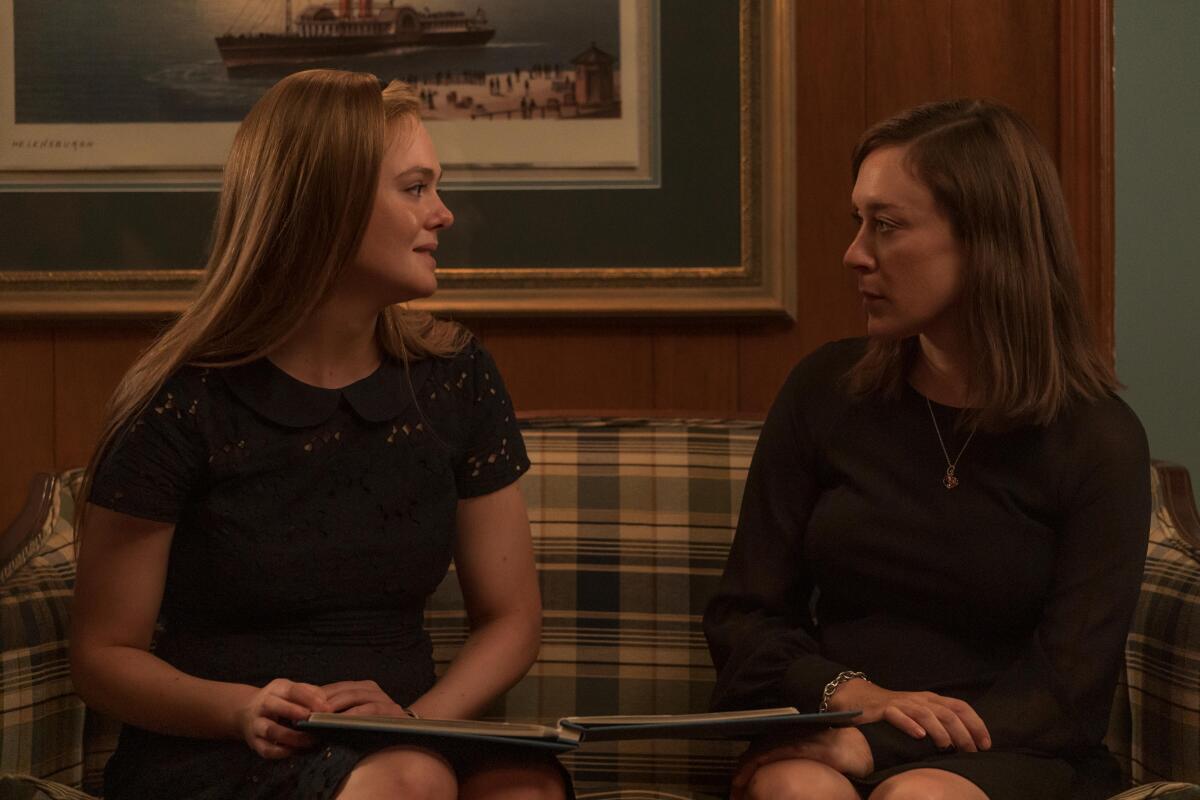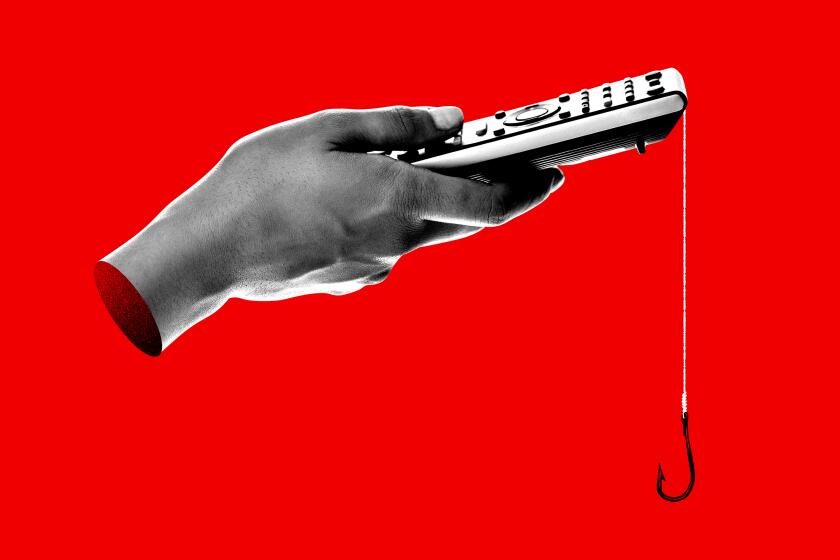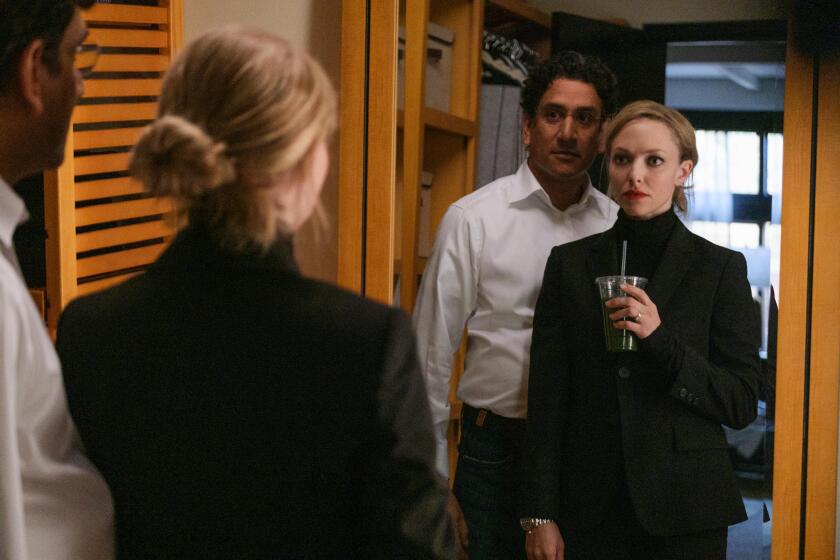āThe Girl From Plainvilleā reimagines the true crime it depicts. Mostly, it works

In āThe Girl From Plainville,ā premiering Tuesday on Hulu, Elle Fanning plays Michelle Carter, who became infamous in 2015 when she was indicted on a charge of involuntary manslaughter for encouraging her boyfriend, Conrad Roy III (Colton Ryan), to kill himself. The ensuing trial (historical fact spoiler alert), which found Carter convicted, was national news, covered in well-researched magazine pieces and barely informed social media posts. Itās also the subject of the 2019 two-part HBO documentary āI Love You, Now Die: The Commonwealth vs. Michelle Carterā and the 2018 Lifetime movie āConrad & Michelle: If Words Could Kill.ā She seemed easy to hate, at the time, at a glance.
Michelle and Conrad, called Coco by his family, met in real life on vacation in Florida; they lived not terribly far from each other in Massachusetts but conducted their subsequent relationship remotely, mainly through texts, a flurry of words out of which they built a disastrous bubble. It was these texts, which demonstrated Conradās determination to kill himself and Michelleās to help or make ā that is the question ā him do it, that constituted the bulk of the case. And it was a text from Michelle to a friend confessing (or claiming) that it was her fault that Conrad died that led to her conviction: In the midst of gassing himself in a truck in a Kmart parking lot, he got scared and got out, Michelle wrote, and she told him to get back in.
From āBad Veganā to āInventing Anna,ā scammers are ubiquitous on TV: Thatās what happens when programmers turn true stories into reheated IP.
Created by Liz Hannah (āThe Postā) and Patrick Macmanus (āDr. Deathā), with Lisa Cholodenko (āUnbelievableā) directing the first two episodes, the new miniseries is thoughtful and intelligent. Like most such series in the Hook āEm and Hold āEm streaming era, it is, at eight episodes, longer than it needs to be, but individual scenes are well written and well played, with a minimum of filler. The tone is neither sensationalistic nor judgmental. It looks good. It touches the main factual bases, with customary adjustments for narrative convenience. (For some reason, Michelle is represented as 18 at the time of Conradās death, when she was a year younger.) If some of its dramatic contrivances raise questions, or feel a little ridiculous, itās not hard to understand the thinking behind them.
Notably, text exchanges between Conrad and Michelle are enacted by the characters face to face ā in one anotherās bedrooms, on a country road at night against a chorus of crickets, on a pier and so on. (We soon glean from context clues that they are not actually together.) Itās a sensible alternative to forcing the viewer to read the texts, or having them read in voice-over, and it allows the actors to bring emotional context and dramatic shape to exchanges; it lets āThe Girl From Plainvilleā be a love story rather than a crime story. It makes a case different from what one might have read in the news.
Artistically, thereās nothing wrong with this ā it comprises a kind of epistolary play, like āLove Letters,ā within the play. And interpretation is part of the process. There are many ways to play Romeo and Juliet; whatever instructions Shakespeare left to posterity must be gleaned from the text itself. As history, however, āPlainvilleā is inescapably a Hollywood miniseries, refracted through the writers, the directors, the actors and all down the creative line. It is no better than partially true, as much as it might be essentially true.

The series, which encompasses the police investigation, trial preparation and courtroom scenes, moves forward on dual tracks: one beginning with Conrad and Michelleās meeting, the other progressing from the discovery of his body. They join up in the end in an episode that does not stint on poetic license, or a few stylish flourishes to suggest Conradās state of mind on his final day: slow motion, shallow focus, sunlight, scenes of nature.
Given that the end is established in the beginning, there is a sense that we are waiting, a long time, for things to come to a head. To the extent we invest in the characters, we are less interested in the outcomes than in blame ā not the story, but the story behind the story, which we canāt actually know but have to decide for ourselves. Conrad and Michelle were, after all, in important respects, mysteries to their own families, and even if we have not necessarily been diagnosed with depression and social anxiety ourselves, or contemplated suicide, we have all been teenagers and many of us lonely teenagers, for a spell, who might have had trouble envisioning a less painful tomorrow. Adults may have some thoughts about kids these days with their phones and their earbuds, and āThe Girl From Plainvilleā is happy for you to have them.
The show belongs to Fanning, to ChloĆ« Sevigny as Conradās mother, Lynn and, to a lesser extent, Ryan, although Conradās character is somewhat fixed, inward and opaque; his rarely wavering suicidal intent makes him as much a catalyst as a victim. Sevigny is excellent, worn in different ways before and after her sonās death, handling him with care but not kid gloves in life, more sorrowful than vengeful afterward. She never does too much. There are plenty of other characters, including Norbert Leo Butz as Conradās father and Lynnās ex-husband (loving, obtuse); Kelly AuCoin as a detective pressing the case; Aya Cash as the prosecuting attorney (ambitious) and Michael Mosley as the defense (hopeful); and various friends and so-called friends and family members. They have their moments, but they are outside the main emotional thrust of the series.
From studying depositions and speaking to farm animals to perfecting the position of her tongue, Seyfried explains how she nailed Holmesā baritone.
In a nuanced performance, where nuance might easily give way to histrionics, Fanning finds surprising variety in Michelle without making her seem too self-contradictory; indeed, the series is ordered in a manner to make us regard her initially with skepticism and later with a degree of compassion ā at first, a manipulative liar, organizing events to her own emotional advantage, and then a person whose relationship with the truth is complicated beyond her ability to understand it, a girl not in control. (She had mental health issues of her own; she had a history of bulimia and cutting herself.) That her reason for encouraging Conrad to end his life was to feel powerful, or to make herself a sympathetic figure and so gain friends, is a simplification āPlainvilleā manages to avoid. Only in the courtroom scenes, where Michelle remains silent, does Fanning ā a good physical match for the woman sheās playing ā seem to be working on the surface, aping the video record, imitating rather than embodying.
It is not, as it might be on āLaw & Orderā or some-such, a look-alike story, absolutely free to embroider, but one that uses the real names of its principal players and their actual words, court transcripts and other on-the-record statements; vlog-ish videos the real Conrad Roy made are re-created down to the facial expressions. At the same time, it is held together by ā turned into television by ā invented scenes and conversations and even fantasy sequences, including a couple of musical numbers. (Michelle Carter was much affected by the series āGlee.ā) TV and the movies play in this sandbox all the time ā biopics and docudramas are catnip to producers and actors; they get press, they win awards ā but whether they get you nearer to or farther from the truth of the matter is fundamentally impossible to say. They are hypothetical at best, opportunistic at worst.
That doesnāt mean that such speculative drama is useless. It may spark questions to feed the dialogue you are bound to have with any such series ā Is this part real? Is that part made up? ā which may also become a dialogue with yourself. āPlainvilleā may get you thinking more generally about responsibility, of media that sells kids death-wrapped images of love, of how ready we are to believe we know what we only think we know. It may at least remind you that, in an age fueled by reductive statements about everything under the sun, nothing human is as simple as it seems.
āThe Girl From Plainvilleā
Where: Hulu
When: Any time
Rating: TV-MA (may be unsuitable for children under the age of 17)
More to Read
The complete guide to home viewing
Get Screen Gab for everything about the TV shows and streaming movies everyoneās talking about.
You may occasionally receive promotional content from the Los Angeles Times.









